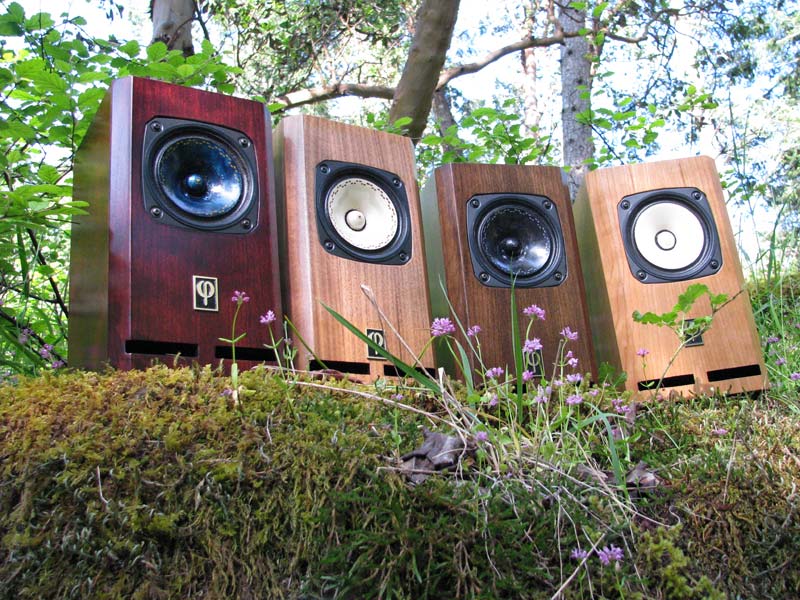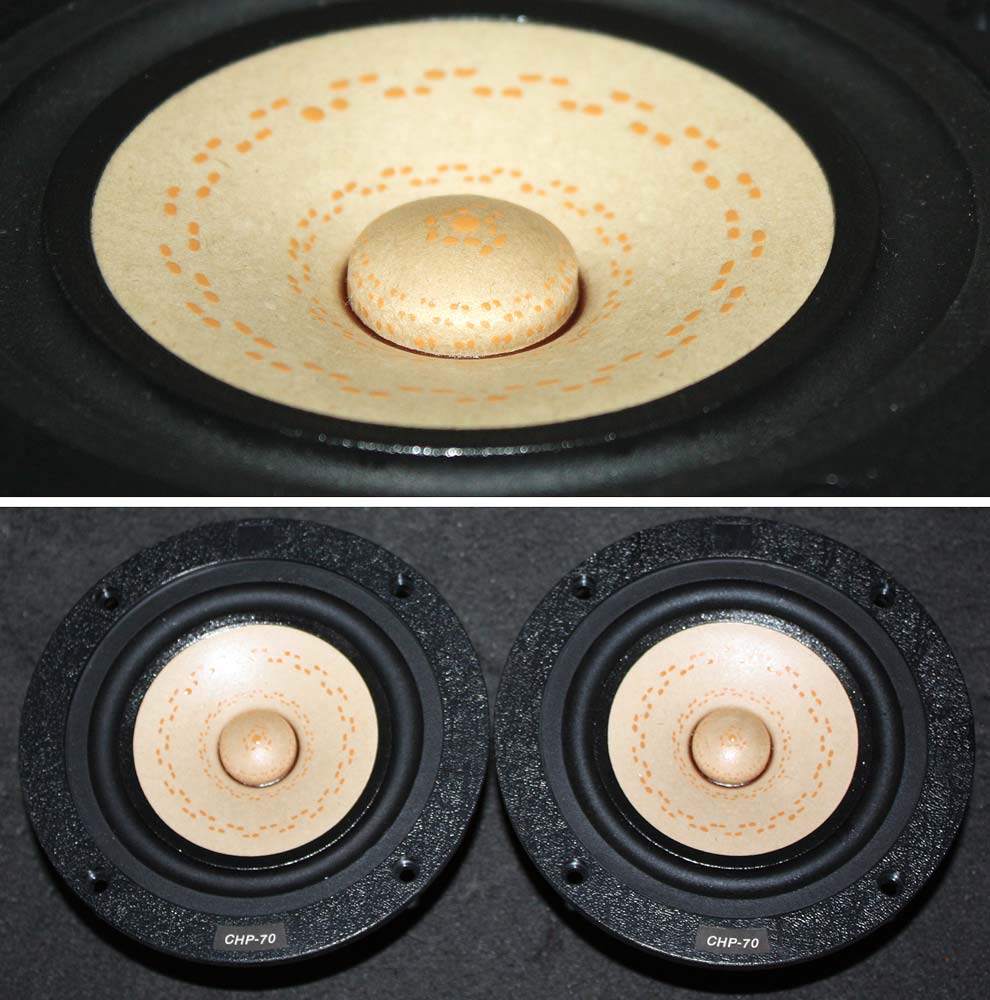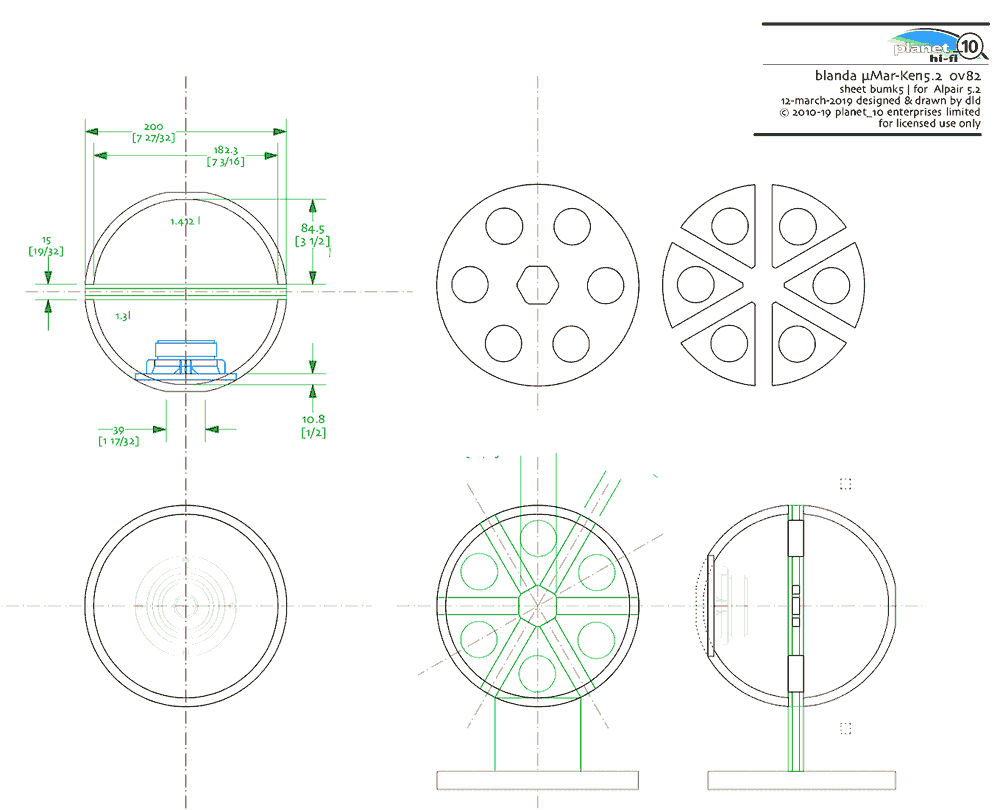Hi
I'm thinking about building a set of cabinets with the Markaudio CHP-70-P Gen2 drivers, in an isobaric setup.
Is that at all reasonable?
Will I get the increased low end for a small volume enclosure, while maintaining all the benefits of the full range sweetness, that these drivers offer?
Thanks for any comments and suggestions.
I'm thinking about building a set of cabinets with the Markaudio CHP-70-P Gen2 drivers, in an isobaric setup.
Is that at all reasonable?
Will I get the increased low end for a small volume enclosure, while maintaining all the benefits of the full range sweetness, that these drivers offer?
Thanks for any comments and suggestions.
It depends which variation of isobaric loading you mean. If you mean the style most famously used by Linn with the Isobarik (i.e. an internal driver mounted directly behind one radiating into the room, front-to-back), then you can. However, it also depends on the specific driver. With wideband drivers, you'd likely want to low-pass the internal unit to stop excess interference in the midband & HF, and in all variations of the isobaric load, you may need to go easy with the volume knob; these are not woofers or subwoofers but wideband units with necessarily low mass cones & suspensions, and at high levels you may start to overload both.
Last edited by a moderator:
It depends which variation of isobaric loading you mean. If you mean the style most famously used by Linn with the Isobarik (i.e. an internal driver mounted directly behind one radiating into the room, front-to-back), then you can. However, it also depends on the specific driver. With wideband drivers, you'd likely want to low-pass the internal unit to stop excess interference in the midband & HF, and in all variations of the isobaric load, you may need to go easy with the volume knob; these are not woofers or subwoofers but wideband units with necessarily low mass cones & suspensions, and at high levels you may start to overload both.
Thank you. Exactly the kind of advice I was looking for. I don't need to look any further really, and abandon this path.
It's much cheaper and easyer to use EQ.
EQ is for a completely dissimilar purpose to isobaric loading, so I'm at a loss to know what exactly you think is comparable.
Thank you. Exactly the kind of advice I was looking for. I don't need to look any further really, and abandon this path.
Narry a problem, it's what we're here for.
Isobaric type loads do not give something for nothing; you can get a reduced enclosure volume for a target Fb & alignment (albeit not as much as sometimes claimed due to the additional internal driver & chamber) at the price of a 3dB loss in sensitivity. Arguably there may be some distortion reduction, but this assumes the airload in the internal chamber load is perfectly linear, which is not the case, so this isn't a major selling point for the configuration per se.
Last edited by a moderator:
Thank you scott
I somehow got it into my head, that I must build a spherical, or ellipsoid shaped cabinet, for a full range driver. To get adequate volume, a sphere being quite ineffective, the overall size becomes pretty big. Not sure yet if I can live with an unproportionally sized cabinet, or go with less low end ...
I somehow got it into my head, that I must build a spherical, or ellipsoid shaped cabinet, for a full range driver. To get adequate volume, a sphere being quite ineffective, the overall size becomes pretty big. Not sure yet if I can live with an unproportionally sized cabinet, or go with less low end ...
Bank,
Next time please contact a moderator to move your thread instead of starting a new one. It was a bit of work to fix this one.
dave :cop”
diyAudio Moderation team
Next time please contact a moderator to move your thread instead of starting a new one. It was a bit of work to fix this one.
dave :cop”
diyAudio Moderation team
Bank,
Next time please contact a moderator to move your thread instead of starting a new one. It was a bit of work to fix this one.
dave :cop”
diyAudio Moderation team
sure thing
Mod cap off.
To expand what Scott said:
The roll-off of the back driver is because otherwise you start to get FR ripple caused by reinforcement or cancellation related to the distance between the 2 drivers, caused by the out of time signal coming from the back driver thru the front driver.
As well, with an enclosure as small as you would do for a CHP70.2 (9 litres max for me for reflex), the extra construction material & the necessary air cavity (as small as possible always), despite only needing 1/2 the original volume, all the other stuff gives you a box no smaller than with just one driver in the full volume.
So isobarik is useful only for woofers. And nowdays with a much broader choice of woofers, unless you already have some in hand, just choose woofers that fir in the size box you can afford.
The CHP70.2 is a nice driver but has a shelved down top end (>5k). This may or may not be an issue for you. I think someone fixed that somewhat by removing the dustup or some such. A thread on this forum somewhere.
the price of 4 x CHP70 is approx the same as 2 x A7.3 or A7ms, which are way better value (althou the 7ms likes a bigger box). If you want small you might consider A6.2p, which has a much better done vintage top then the CHP, goes almost as low (but won’t move as much air), has better DDR/resolution/detail, and a big box for it is 5 litres.
These are ancient, but we have used the exact same milliSize box for many drivers (bar driver specific things (baffle/brace/vent spacer, somethings vent shelf).

Both the CHP70.2 & the A6p fit this size box. For the former it is the smallest box, for the later the biggest (almost), the A6p sounds much more relaxed with greater amounts of information, more natural bass, it just won’t play as loud.
dave
To expand what Scott said:
The roll-off of the back driver is because otherwise you start to get FR ripple caused by reinforcement or cancellation related to the distance between the 2 drivers, caused by the out of time signal coming from the back driver thru the front driver.
As well, with an enclosure as small as you would do for a CHP70.2 (9 litres max for me for reflex), the extra construction material & the necessary air cavity (as small as possible always), despite only needing 1/2 the original volume, all the other stuff gives you a box no smaller than with just one driver in the full volume.
So isobarik is useful only for woofers. And nowdays with a much broader choice of woofers, unless you already have some in hand, just choose woofers that fir in the size box you can afford.
The CHP70.2 is a nice driver but has a shelved down top end (>5k). This may or may not be an issue for you. I think someone fixed that somewhat by removing the dustup or some such. A thread on this forum somewhere.
the price of 4 x CHP70 is approx the same as 2 x A7.3 or A7ms, which are way better value (althou the 7ms likes a bigger box). If you want small you might consider A6.2p, which has a much better done vintage top then the CHP, goes almost as low (but won’t move as much air), has better DDR/resolution/detail, and a big box for it is 5 litres.
These are ancient, but we have used the exact same milliSize box for many drivers (bar driver specific things (baffle/brace/vent spacer, somethings vent shelf).

Both the CHP70.2 & the A6p fit this size box. For the former it is the smallest box, for the later the biggest (almost), the A6p sounds much more relaxed with greater amounts of information, more natural bass, it just won’t play as loud.
dave
The picture might not have enuff scale reference, here are the plans for the original, the FE127e mFonken: http://p10hifi.net/FAL/downloads/mFonken-1v1dot1-map-271009.pdf
dave
dave
thank you dave
Lots to chew on here ...
the main takeaway for now is, that form should follow function. My principal motivation for using the CHP70.2, was it's beige cone color. I imagined it looking amazing, paired with a pale blue, mat finished, spherical cabinet.
I recently finished some pensil cabinets, with the Alpair-11MS drivers, and they sound wonderful. I wanted to try something else, and not go with a gold cone, hence the CHP70.2
Lots to chew on here ...
the main takeaway for now is, that form should follow function. My principal motivation for using the CHP70.2, was it's beige cone color. I imagined it looking amazing, paired with a pale blue, mat finished, spherical cabinet.
I recently finished some pensil cabinets, with the Alpair-11MS drivers, and they sound wonderful. I wanted to try something else, and not go with a gold cone, hence the CHP70.2
dave
while i have your attention ...
why only a max volume of 9 liters for a CHP70.2 enclosure?
bassbox suggests a max of ~14.5 liters.
thank you
while i have your attention ...
why only a max volume of 9 liters for a CHP70.2 enclosure?
bassbox suggests a max of ~14.5 liters.
thank you
EQ is for a completely dissimilar purpose to isobaric loading, so I'm at a loss to know what exactly you think is comparable.
It's the result that counts.
Not the way the result is obtained. Unless you are fundamental in your belief system.
So if you want more bass, there are several methods to achieve that. Isobaric is one, EQ is an other. One is expensive and complicated, the other easy and cheap.
Why are you making remarks about 'fundamental belief systems?'
The gentleman asked about isobaric enclosures, not EQ. Therefore, I gave him several answers about isobaric enclosures (and advised him to avoid them in this context, since they are unsuitable for what he is trying to achieve). Perhaps you could enlighten us why it is a 'fundamental belief system' to answer the question asked?
You may also wish to refresh your memory about isobaric enclosures, since they are not 'a way to get more bass' per se. They are a mechanical method of allowing a reduced enclosure size for a given alignment. You may also, while doing so, wish to reflect on the fact that sweeping generalisations are not necessarily very accurate. While I am not a fan of the isobaric load, it is complete twaddle to state that all such loads are 'complicated and expensive'. Are they my round rosy red jacksie. A single internal panel is all that is required in many cases, and the cost depends on the cost of the drive units. If they are expensive, it's expensive. If they're cheap, it's cheap. Quod erat demonstrandum. In the same vein, it is equal twaddle to state that all forms of EQ are 'cheap'. No they aren't. What type of EQ? How applied? What context? Some forms are inexpensive, some are not. A degree of rationality and consideration of context is required, not blanket statements masqurading as fact.
The gentleman asked about isobaric enclosures, not EQ. Therefore, I gave him several answers about isobaric enclosures (and advised him to avoid them in this context, since they are unsuitable for what he is trying to achieve). Perhaps you could enlighten us why it is a 'fundamental belief system' to answer the question asked?
You may also wish to refresh your memory about isobaric enclosures, since they are not 'a way to get more bass' per se. They are a mechanical method of allowing a reduced enclosure size for a given alignment. You may also, while doing so, wish to reflect on the fact that sweeping generalisations are not necessarily very accurate. While I am not a fan of the isobaric load, it is complete twaddle to state that all such loads are 'complicated and expensive'. Are they my round rosy red jacksie. A single internal panel is all that is required in many cases, and the cost depends on the cost of the drive units. If they are expensive, it's expensive. If they're cheap, it's cheap. Quod erat demonstrandum. In the same vein, it is equal twaddle to state that all forms of EQ are 'cheap'. No they aren't. What type of EQ? How applied? What context? Some forms are inexpensive, some are not. A degree of rationality and consideration of context is required, not blanket statements masqurading as fact.
...it's beige cone color…
Lovely colour indeed.

paired with a pale blue, mat finished, spherical cabinet.
:^)
For the CHP70 you need at least 4.7 litres internal. A circular “box” is probably not the best shape to implement an isobarik.
I did an Ikea wooden bowl circular design for the A5.2 based on my original CHR sketches. Those were derived from a box i did for the CHR70 (same basket as the CHP). The later used the small (or medium) bowls — the latter the large bowls.

dave
why only a max volume of 9 liters for a CHP70.2 enclosure?
The nature of the miniOnken alignment i use means small boxes with elegant, articulate bass. They might not go as low as some other tunings but i am not willing to sacrifice finesse. If you need more bass i would suggest a TL (like Pensil) or horn (like Frugel-Horn Mk3).
dave
So if you want more bass, there are several methods to achieve that. Isobaric is one...
Isobarik does not give more bass. It gives the same bass in a box of 1/2 the net volume (plus the extra chamber and build material).
dave
- Home
- Loudspeakers
- Full Range
- Markaudio in isobaric configuration